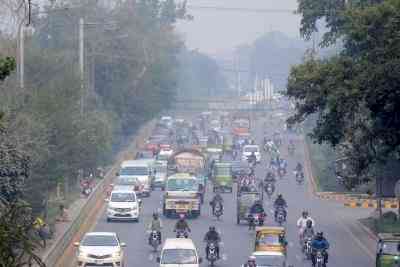Prostate Cancer: Know Its Warning Signals And Treatment Options

Dr. Thaodem Tomcha
Sr. Consultant, Radiation Oncology
American Oncology Institute, Imphal
Introduction:
Prostate is a small walnut-shaped gland in males that surround urethra just below the urinary bladder. It produces seminal fluid that nourishes and also transports the sperms. Prostate cancer usually grows very slowly and may not cause any symptoms initially but in due course, it leads to symptoms.
Incidence/Magnitude:
Prostate cancer is the commonest male cancer in the West constituting about 26% of all cancers. In India also its incidence is gradually increasing and constitutes about 7% of all male cancers and an incidence rate of 9-10 per 1 lac population. The rate is higher than the rest of Asia.
Risk Factors:
Having the following factors may cause/increase incidence of prostate cancer
- Age above 50 years (More so when >65 years)
- Race / Ethnicity: African Americans, Caribbean men of African origin
- Family history
- Diet: Those having more red meat and dairy products
- Obesity
- Smoking
- Inflammation of the prostate
- Higher levels of the male hormone, testosterone in the blood
Presenting symptoms:
- Pain or difficulty in passing urine
- Urgency and increased frequency of urination
- Decreased/weak stream of urination
- Difficulty starting or stopping the urine stream
- Blood in semen
- Pain in the pelvis (Lower Abdomen)
- Erectile difficulty
- Bone pain
Screening (Looking for cancer in normal individuals):
- DRE (Digital Rectal Examination): Using a glove and lubricants, prostate gland is palpated with a finger per rectum. To the expert hand, prostate cancer can be suspected and confirmed with a biopsy.
- Blood for PSA (Prostate-Specific Antigen): This is a tumor marker for prostate and is significantly raised in prostate cancer
For normal individuals, screening can be started at 55 years of age. Those who have a positive family history and those of African American ancestry (Genetically more susceptible), should start at an earlier age of 40-50 years.
Diagnosis:
- DRE
- Blood for PSA
- Trans-rectal USG
- MRI
- Trans-Rectal Biopsy can be done under manual guidance, USG guidance, MRI guidance.
Treatment:
Treatment depends on the stage and grade of malignancy (Gleason Score). Both surgery and Radiation Treatment can be used independently or in combination for curative treatment when the disease is confined within the loco-regional area. While the role of Hormonal Treatment and Chemotherapy are adjunctive to Surgery or Radiation Treatment and can enhance treatment response and prolong survival. Hormonal Treatment is usually used as neo-adjuvant, concurrent or adjuvant treatment to Radiation Treatment to enhance response. In advanced stages when cure is not possible, initial treatment is usually Hormonal Treatment. When it is no more responsive, Chemotherapy treatment is the next line of treatment. Radiation treatment technology has advanced so much (Conformal Radiation) that we can exclusively target the disease only sparing the normal tissue in the surrounding.
Survival probability after treatment (5-year survival rate):
- Locally confined: Nearly 100%
- Regionally confined: 95-100%
- Wide-spread disease: 30%
- Overall: >90%
Summary:
Prostate cancer is the commonest cancer in the West. In India also its incidence is coming up very fast and is higher than in other Asian countries. Luckily, this disease is very slow-growing and has several treatment options like Surgery, Radiation Treatment, Hormonal Treatment, Chemotherapy, etc. Newer treatments like Robotic Surgery and Conformal Radiation Treatment are less invasive (Normal tissue/organ sparing) achieving very good treatment results.


 cityairnews
cityairnews 









